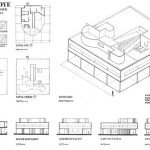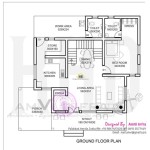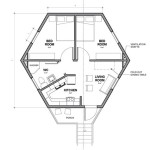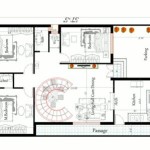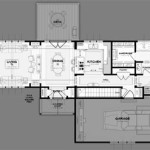How to Craft House Plans: An Essential Guide
Creating house plans is a crucial step in the home construction process. Whether you're building from scratch or renovating an existing property, properly drawn plans lay the foundation for a successful project. Here's a comprehensive guide to help you understand the essential aspects of drawing house plans.
1. Determine Your Requirements
Start by clearly defining your needs and preferences. Consider the number of bedrooms, bathrooms, and other spaces you require. Think about the desired layout, style, and overall size of the home. It's helpful to create a list of your requirements and prioritize them based on importance.
2. Measure and Sketch the Existing Structure (if applicable)
If renovating, accurately measure the existing structure and create a detailed sketch. Note any alterations you plan to make, including additions, expansions, or reconfigurations. This will provide a comprehensive baseline for your new plans.
3. Choose the Right Software
Consider the available software options for drawing house plans. Some popular options include AutoCAD, ArchiCAD, and SketchUp. Each software has its strengths and complexities. Choose a program that aligns with your skill level and budget.
4. Start with the Floor Plan
The floor plan is a foundational element of house plans. Start by outlining the exterior walls and dividing the interior space into rooms. Arrange the rooms functionally, considering their size, shape, and relationship to one another. Pay attention to traffic flow and natural light access.
5. Add Details and Features
Next, incorporate details into the floor plan, such as walls, windows, doors, and fixtures. Indicate the location of plumbing and electrical outlets, HVAC systems, and other essential infrastructure. This level of detail is crucial for accurate construction.
6. Create Elevations and Sections
Elevations are drawings that show the exterior walls of the home from different perspectives. Sections provide a vertical cross-section of the structure, revealing details such as rooflines, floor levels, and interior heights. These drawings are essential for visualizing the home's overall appearance and volume.
7. Include Construction Notes
Add construction notes to your plans to provide detailed instructions for the builders. Specify materials, dimensions, finishes, and any special requirements. Clear and thorough notes help ensure that the project is executed according to your specifications.
8. Get Professional Review
Consider seeking professional review of your house plans by an architect or engineer. They can evaluate the plans for technical accuracy, compliance with building codes, and overall functionality. Their expertise can help identify potential issues and optimize the design.
9. Finalize and Submit the Plans
Once satisfied with the plans, finalize and submit them to the relevant authorities for approval. This may include local building departments or private property management companies. Obtain necessary permits before commencing construction to ensure compliance with regulations and avoid potential delays.
Conclusion
Drawing house plans is a multi-faceted process that requires careful planning, technical knowledge, and attention to detail. By following these essential aspects, you can create accurate and comprehensive plans that serve as a blueprint for your dream home. Remember to consider professional review, obtain necessary approvals, and approach the project with meticulous precision to achieve a successful outcome.

House Plans How To Design Your Home Plan

House Plans How To Design Your Home Plan

Floor Plan Creator And Designer Free Easy App

House Plans How To Design Your Home Plan

House Plans How To Design Your Home Plan

House Plans How To Design Your Home Plan

House Plans How To Design Your Home Plan

Small House Plans Popular Designs Layouts

Draw Floor Plans With The Roomsketcher App

3d Floor Plans

